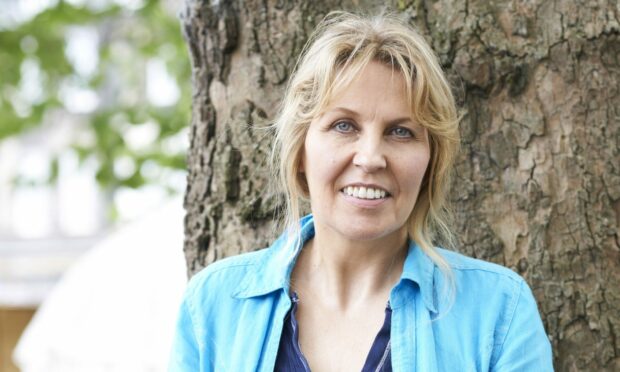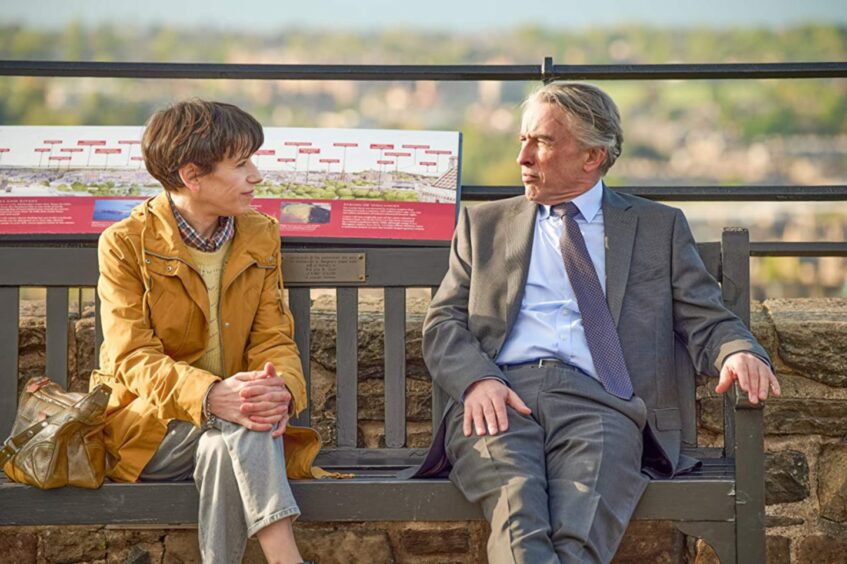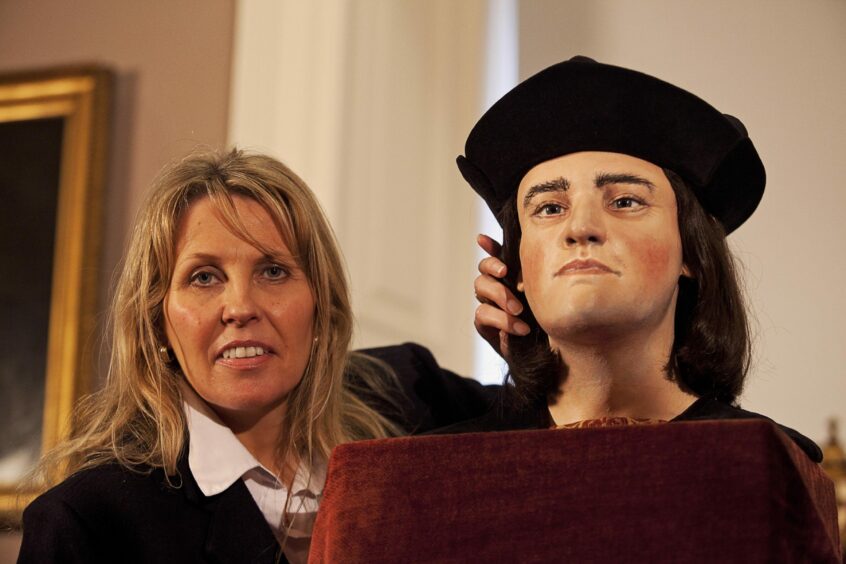
If ever a true-life tale was perfect for a movie adaptation, it was the story of Richard III’s remains being found under a car park by a member of the public with a sixth sense.
Philippa Langley was that member of the public and the film was The Lost King, released six months ago to good reviews and a fair amount of controversy, the latter emanating from the archaeologists at Leicester University who carried out the dig and were unhappy with how they were portrayed in the film.
“I didn’t expect that from the academics,” said Langley, speaking from her home in Edinburgh. “Because it had been so long and they knew what my role was, I thought they would be more accepting of it, so it was a surprise.”
That criticism aside, Langley is pleased with the movie, which was co-written by Steve Coogan, and its overall reception. She was played by double Oscar nominee Sally Hawkins – “For an actor of her calibre to want to play an ordinary person like me blew me away.”
There is little ordinary about Langley, a working mum of two who read a biography of Richard III 25 years ago and was so surprised by the revelation he was nothing like Shakespeare’s murderous, tyrannical version that she became consumed with finding out more about who he really was.
Her focus soon shifted to his death, burial and, indeed, where his remains might be found.
Having left her marketing job behind to give the project her full attention, she became convinced she had found his resting place after experiencing a feeling that shook her to her bones.
“It had never happened before, that feeling I was walking on someone’s grave,” said Langley, who will chat about the film and the updated version of her book, The Lost King, at Borders Book Festival next weekend. “Whenever I was standing in that area, I would get the feeling.
“It’s an interesting aspect of the story and I don’t know how to explain it. Scientists who have been to my talks are interested in it. I believe there is research going on that looks at whether we, as humans, sometimes have a sixth sense. Clearly my head was all about Richard when I was visiting Leicester, and was that a factor?
“It happened with Howard Carter and Tutankhamun. He had an intuitive experience that the boy king’s grave was in a particular area, despite all the archaeologists saying he wouldn’t find it there. It was the same with Edith Pretty at Sutton Hoo.
“It would be interesting to see if the scientists can come up with something about that. It was the experience that changed my research focus and led to the Looking For Richard project and cutting the tarmac – it was the catalyst.”
Missing Princes
The discovery of Richard – under the letter R, remarkably, which had been painted for a reserved space in the car park – has not brought an end to Langley’s research. She set up the Missing Princes Project (for the missing sons of Edward IV) eight years ago and promises there is interesting news to come about that later in the year.
She also remains part of the Hidden Abbey project in Reading, a research initiative to uncover the story of the city’s abbey and to locate the burial place of Henry I.
She said: “For a long time it was believed the grave of Henry I, the son of William The Conqueror, was under a nursery school building, but from my research it looks like he is under the car park of Reading Prison, so it’s another king in a car park, and it looks like Henry is buried under the letter K for king, which would be hilarious.”
Langley admitted that agreeing to the film, which she knew would be focused on her journey rather than the discovery of Richard III’s remains, required a lot of consideration.
“It was something I thought long and hard about before I accepted to go with it,” she explained. “It was eight years from my first meeting with Steve Coogan before the film was made. It was a long time and a long process but they did their diligence very well. They came and met my sons, Max and Raife, and my partner, John.
“Steve was very upfront; he said they wanted to tell my story, so would need to meet and speak to my family and for me to tell everything. I spoke to the boys, who are 27 and 25 now, and they said, ‘Look, Mum, it’s a story that’s not been told, so we’re happy if you’re happy and we’ll support you’ and John said the same. They basically said whatever I did, they would support me.”
Edinburgh played its own starring role in the film, with the city’s unique landscapes and architecture having a prominent role.
“When Richard III was found in Leicester, no one really told my story, so to reveal I lived in Edinburgh and travelled to Leicester all the time would have surprised a lot of people,” Langley said. “I love that Edinburgh is a character in the film – it looks stunning on screen. I came here for a weekend in 1989 and just loved it, so it’s become a hell of a long weekend.
“I had an interesting experience at St Mary’s Cathedral in Edinburgh, where we recreated Richard’s burial for the film.
“It was done beautifully. I remember when I was at the reburial in Leicester in 2015, sitting there thinking I would never see this again, and then it was recreated for the film. It was one of the most remarkable parts of it for me.”
The story of filming at St Mary’s features in the updated version of the book, as does a poem written by Carol Ann Duffy. The new edition, as well as the film, feels in some ways like the end of a chapter for Langley.
She said: “The whole point of going in search of Richard was to hopefully find him and give him a reburial with dignity and honour, to bury him as a king and a brave soldier who died on the field of battle and to let people know the historic Richard is very different from the dramatic Richard from Shakespeare, and I think we’ve done all that.”
So, the end of a chapter but not the end of the story, because only time will tell what Langley will uncover next.
The Lost King: The Search For Richard III with Philippa Langley, Cullen Kilshaw Marquee, Borders Book Festival, June 18

Enjoy the convenience of having The Sunday Post delivered as a digital ePaper straight to your smartphone, tablet or computer.
Subscribe for only £5.49 a month and enjoy all the benefits of the printed paper as a digital replica.
Subscribe
 © Jenny Goodall/Daily Mail/Shutter
© Jenny Goodall/Daily Mail/Shutter